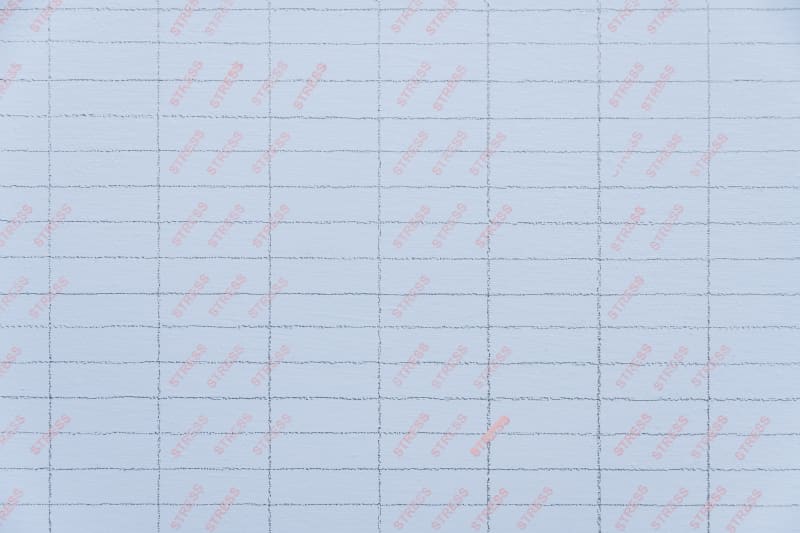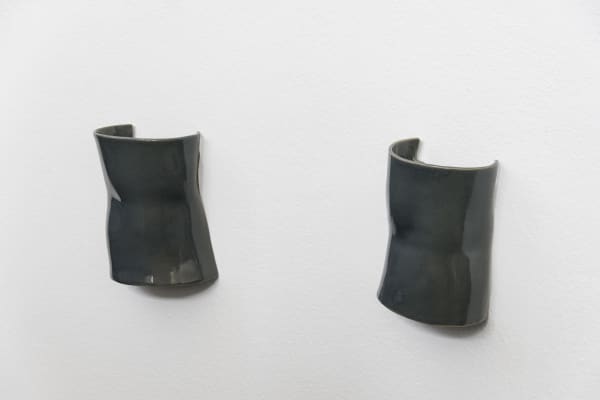CFA Milano | Young-jun Tak: Twelve, Twelve, Twelve
Past exhibition
Press Release
"Stressful Growth" presents twelve sets of Young-jun Tak’s painting series Stressful Painting (2017–2018) and ceramic sculptures (2024). The former, a year-long project, is Tak’s monthly log of the stress caused by social media use. From March 2017 till March 2018, the artist recorded his stress level, ranging from one to five (very high, high, normal, low, and very low), ten times a day after using Instagram. Each canvas represents a month’s worth of recordings.
The twelve pairs of ceramic body parts are hung beneath the paintings. They are directly cast from the backs of the artist’s mother’s knees, with their hanging points corresponding to the actual height of her knees from the ground. For this sculpture, Tak was inspired by a passage in the novel "My Year Abroad" (2021) by the acclaimed Korean-American novelist Chang-Rae Lee. It depicts an unbelievably miserable situation in which the protagonist is trapped, referencing how the realities from which one forms their identity disappear, symbolized by the image of the backside of one’s mother’s knees from childhood. Tak recalls the perspective of the world observed behind his mother’s knees as a young boy, holding her hand, and how that view and the connection to his mother’s hand and knees have changed as he grew more distant from them.
The sculpture "More or Less", reminiscent of hand-shaped Christian relics, presents two life-sized, aluminum-cast hands standing upright on a half-moon-shaped dining table placed against a wall. Each hand is curiously formed with six fingers, and at each fingertip, a wooden male head replaces the nail. These twelve heads represent the Twelve Apostles, their likenesses drawn from Leonardo da Vinci’s The Last Supper (ca. 1495–1498), painted in the refectory of the Convent of Santa Maria delle Grazie in Milan.
The heads were meticulously carved by a Bavarian workshop specializing in religious sculpture—a craft handed down through 15 generations. The dramatic tension, wonder, and shame expressed on the Apostles’ faces, rendered with striking precision, originally derive from the central figure of Jesus in the famous painting. Yet, in this sculpture, Jesus is absent from the scene, his mediating presence deliberately withheld. This omission disturbs the narrative, transforming the moment into one of chaos and confusion, unanchored by the quintessence of its spiritual core.
Facing the viewer, the hands extend their palms outward, as if reaching or grabbing for something intangible. In front of each hand lies an artificial bread roll, a seemingly mundane object that undercuts the solemnity of the moment. It reduces the sacred gathering to a trivial dispute, propelled not by divine purpose but by base, earthly desire.
The twelve pairs of ceramic body parts are hung beneath the paintings. They are directly cast from the backs of the artist’s mother’s knees, with their hanging points corresponding to the actual height of her knees from the ground. For this sculpture, Tak was inspired by a passage in the novel "My Year Abroad" (2021) by the acclaimed Korean-American novelist Chang-Rae Lee. It depicts an unbelievably miserable situation in which the protagonist is trapped, referencing how the realities from which one forms their identity disappear, symbolized by the image of the backside of one’s mother’s knees from childhood. Tak recalls the perspective of the world observed behind his mother’s knees as a young boy, holding her hand, and how that view and the connection to his mother’s hand and knees have changed as he grew more distant from them.
The sculpture "More or Less", reminiscent of hand-shaped Christian relics, presents two life-sized, aluminum-cast hands standing upright on a half-moon-shaped dining table placed against a wall. Each hand is curiously formed with six fingers, and at each fingertip, a wooden male head replaces the nail. These twelve heads represent the Twelve Apostles, their likenesses drawn from Leonardo da Vinci’s The Last Supper (ca. 1495–1498), painted in the refectory of the Convent of Santa Maria delle Grazie in Milan.
The heads were meticulously carved by a Bavarian workshop specializing in religious sculpture—a craft handed down through 15 generations. The dramatic tension, wonder, and shame expressed on the Apostles’ faces, rendered with striking precision, originally derive from the central figure of Jesus in the famous painting. Yet, in this sculpture, Jesus is absent from the scene, his mediating presence deliberately withheld. This omission disturbs the narrative, transforming the moment into one of chaos and confusion, unanchored by the quintessence of its spiritual core.
Facing the viewer, the hands extend their palms outward, as if reaching or grabbing for something intangible. In front of each hand lies an artificial bread roll, a seemingly mundane object that undercuts the solemnity of the moment. It reduces the sacred gathering to a trivial dispute, propelled not by divine purpose but by base, earthly desire.
Installation Views



